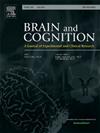你能认出那张滑稽的脸吗?儿童闹剧幽默加工的脑电图研究
IF 1.4
3区 心理学
Q3 NEUROSCIENCES
引用次数: 0
摘要
本研究利用脑电图(EEG)研究了4 ~ 5岁儿童对闹剧幽默识别的神经关联。我们的问题是,面部表情识别能力的发展是否会影响在不幸的情况下识别幽默的能力。孩子们完成了两个任务:一个是情绪识别任务(EmoRec),在这个任务中,孩子们必须识别一致和不一致的情绪表达;另一个是幽默识别任务(HumRec),在这个任务中,他们被要求区分幽默和非幽默的不幸情况。我们确定了与闹剧幽默加工(N170, LP)和面部加工(N170, P300)相关的特定神经相关。这表明,4到5岁的孩子能够识别面部的情绪,并在不幸的情况下识别出幽默的信息。此外,神经活动与幽默和面部情绪识别相关。这支持了一种假设,即情绪识别有助于理解儿童早期的闹剧幽默。本文章由计算机程序翻译,如有差异,请以英文原文为准。
Can you spot the funny face? An EEG study on slapstick humour processing in children
This study investigated the neural correlates of slapstick humour recognition in 4- to 5-year-old children using electroencephalography (EEG). We asked whether the development of facial expression recognition affects the capacity to identify humour in situations involving misfortune. The children completed two tasks: an Emotion Recognition Task (EmoRec), in which the children had to identify congruent and incongruent emotional expressions, and a Humour Recognition Task (HumRec), in which they were asked to distinguish humorous from non-humorous misfortunate situations. We identified specific neural correlates associated with slapstick humour processing (N170, LP) and neural correlates related to face processing (N170, P300). This suggests that children between the ages of 4 and 5 recognised emotions in faces and identified humorous information in misfortunate situations. In addition, the neural activity was correlated with humour and facial emotion recognition. This supports the hypothesis that emotional recognition contributes to understanding slapstick humour in early childhood.
求助全文
通过发布文献求助,成功后即可免费获取论文全文。
去求助
来源期刊

Brain and Cognition
医学-神经科学
CiteScore
4.60
自引率
0.00%
发文量
46
审稿时长
6 months
期刊介绍:
Brain and Cognition is a forum for the integration of the neurosciences and cognitive sciences. B&C publishes peer-reviewed research articles, theoretical papers, case histories that address important theoretical issues, and historical articles into the interaction between cognitive function and brain processes. The focus is on rigorous studies of an empirical or theoretical nature and which make an original contribution to our knowledge about the involvement of the nervous system in cognition. Coverage includes, but is not limited to memory, learning, emotion, perception, movement, music or praxis in relationship to brain structure or function. Published articles will typically address issues relating some aspect of cognitive function to its neurological substrates with clear theoretical import, formulating new hypotheses or refuting previously established hypotheses. Clinical papers are welcome if they raise issues of theoretical importance or concern and shed light on the interaction between brain function and cognitive function. We welcome review articles that clearly contribute a new perspective or integration, beyond summarizing the literature in the field; authors of review articles should make explicit where the contribution lies. We also welcome proposals for special issues on aspects of the relation between cognition and the structure and function of the nervous system. Such proposals can be made directly to the Editor-in-Chief from individuals interested in being guest editors for such collections.
 求助内容:
求助内容: 应助结果提醒方式:
应助结果提醒方式:


